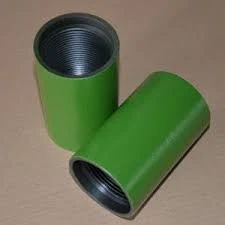- Afrikaans
- Albanian
- Amharic
- Arabic
- Armenian
- Azerbaijani
- Basque
- Belarusian
- Bengali
- Bosnian
- Bulgarian
- Catalan
- Cebuano
- Corsican
- Croatian
- Czech
- Danish
- Dutch
- English
- Esperanto
- Estonian
- Finnish
- French
- Frisian
- Galician
- Georgian
- German
- Greek
- Gujarati
- Haitian Creole
- hausa
- hawaiian
- Hebrew
- Hindi
- Miao
- Hungarian
- Icelandic
- igbo
- Indonesian
- irish
- Italian
- Japanese
- Javanese
- Kannada
- kazakh
- Khmer
- Rwandese
- Korean
- Kurdish
- Kyrgyz
- Lao
- Latin
- Latvian
- Lithuanian
- Luxembourgish
- Macedonian
- Malgashi
- Malay
- Malayalam
- Maltese
- Maori
- Marathi
- Mongolian
- Myanmar
- Nepali
- Norwegian
- Norwegian
- Occitan
- Pashto
- Persian
- Polish
- Portuguese
- Punjabi
- Romanian
- Russian
- Samoan
- Scottish Gaelic
- Serbian
- Sesotho
- Shona
- Sindhi
- Sinhala
- Slovak
- Slovenian
- Somali
- Spanish
- Sundanese
- Swahili
- Swedish
- Tagalog
- Tajik
- Tamil
- Tatar
- Telugu
- Thai
- Turkish
- Turkmen
- Ukrainian
- Urdu
- Uighur
- Uzbek
- Vietnamese
- Welsh
- Bantu
- Yiddish
- Yoruba
- Zulu
Similar Specifications for Bull Plug Measurements and Design Variations
Understanding Bull Plug Dimensions A Comprehensive Guide
Bull plugs are essential components in various industrial applications, particularly in oil and gas, chemical processing, and construction. These fittings are used to seal the end of a pipe or a fitting, preventing the entry of contaminants and ensuring the integrity of the system. Understanding the dimensions of bull plugs is crucial for engineers, technicians, and procurement professionals to ensure compatibility and functionality in their respective systems.
What is a Bull Plug?
A bull plug is a type of fitting that is designed to close off the end of a pipe. It is typically used where a permanent seal is needed, preventing fluid leakage or contamination. Bull plugs are often manufactured from materials that can withstand high pressures and temperatures, such as stainless steel, PVC, or other durable alloys. Their design can vary, but they generally feature a smooth, tapered end that fits snugly into the pipe.
Importance of Dimensions
The dimensions of a bull plug, including its diameter, length, and thread size, are critical for ensuring a proper fit. The wrong dimensions can lead to leaks, system failures, or even catastrophic accidents. Therefore, it is essential to measure and select the correct bull plug for each application.
1. Diameter The diameter of the bull plug must match the inner diameter of the pipe it is intended to seal. Common sizes range from small diameters (e.g., 1/2 inch) to larger sizes (e.g., 12 inches or more) depending on the application.
bull plug dimensions

2. Length The length of the bull plug can vary, but it is essential that the total length fits within the coupling and does not interfere with any other fittings in the system. Standard lengths can range from short (e.g., 1 inch) to long (e.g., 6 inches or greater), depending on the specific engineering requirements.
3. Thread Size In cases where the bull plug is threaded, the thread size must be compatible with the threading of the pipe or fitting. Standard thread sizes include NPT (National Pipe Thread), BSP (British Standard Pipe), and others. The right thread specification ensures a snug and secure connection.
Applications of Bull Plugs
Bull plugs can be found in a variety of applications. In the oil and gas industry, they are often used to seal pipes during maintenance or shutdown conditions. In chemical processing, they may be essential for ensuring that toxic or hazardous materials do not escape. In construction, bull plugs can be utilized to close off piping during the building phase to avoid damage or contamination from foreign materials.
Conclusion
In conclusion, the dimensions of bull plugs are pivotal in achieving a secure and lasting seal in piping systems. Choosing the proper size and type of bull plug can prevent costly repairs and enhance the safety and efficiency of industrial processes. Engineers and procurement professionals must pay attention to these specifications to ensure the integrity of their systems. Whether you're working in oil and gas, chemical processing, or construction, understanding bull plug dimensions is essential to your success.
-
Tubing Pup Joints: Essential Components for Oil and Gas OperationsNewsJul.10,2025
-
Pup Joints: Essential Components for Reliable Drilling OperationsNewsJul.10,2025
-
Pipe Couplings: Connecting Your World EfficientlyNewsJul.10,2025
-
Mastering Oilfield Operations with Quality Tubing and CasingNewsJul.10,2025
-
High-Quality Casing Couplings for Every NeedNewsJul.10,2025
-
Boost Your Drilling Efficiency with Premium Crossover Tools & Seating NipplesNewsJul.10,2025







